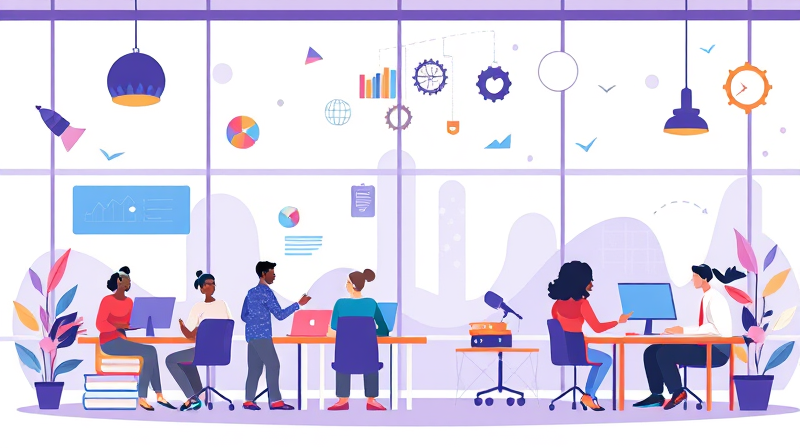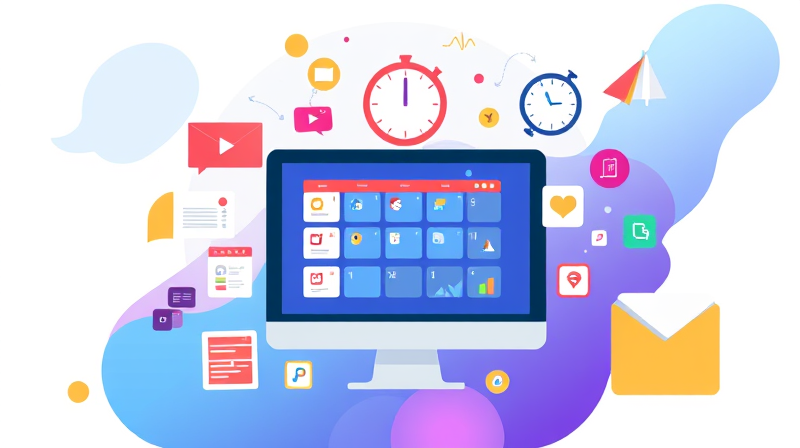In today's dynamic work environment, striking the right balance between professional obligations and personal well-being is not merely a luxury but a necessity. As workplaces evolve, work-life harmony has emerged as a cornerstone of a healthy and productive career. In this article, we explore the challenges of burnout and provide inspiring insights and actionable strategies for achieving the balance that modern professionals need.
Long work hours, overwhelming workloads, and the constant pressure to perform have dramatically increased stress levels, creating an environment conducive to burnout. With over 60% of employees experiencing burnout in recent years, the traditional work model no longer meets the needs of our rapidly changing society.
The Escalating Stress of Inadequate Balance
The modern workplace is experiencing a significant transformation. The traditional 9-to-5 model is giving way to flexible and remote work arrangements as employees demand more control over their schedules. However, the shift has not been without its challenges. Many individuals still struggle to disconnect from work, leading to chronic stress and exhaustion.
Statistics reveal startling figures: 52% of workers directly attribute their exhaustion to job-related stress, while long working hours and overwhelming workloads remain the leading causes. Professionals are often caught in a cycle where the inability to delineate personal time from work responsibilities contributes directly to an increased risk of serious health issues such as strokes and heart disease.
It is clear that retaining our sanity requires deliberate shifts in our daily habits and work culture. Establishing boundaries and taking control of our schedules has become imperative. With technology tethering us to our jobs 24/7, knowing when to disconnect is a skill worth mastering.
One of the most significant findings of recent studies is that even modest changes, such as incorporating just one day of remote work per month, can lead to notable improvements in happiness and productivity. Employees who manage to balance work and personal responsibilities not only feel more energized but often demonstrate creativity and sustained focus.
Many organizations have taken steps towards creating a more balanced work environment. Innovative policies like flexible work arrangements, mental health days, and structured downtime are transforming the workplace into a space where professionals can thrive both personally and professionally.
- Flexible work arrangements: These include remote work and hybrid schedules that allow employees to work from the comfort of their homes while managing personal commitments.
- Mental health support: An increasing number of organizations now offer employee assistance programs (EAPs), counseling services, and stress management workshops.
- Realistic workload expectations: By setting achievable targets, companies can reduce the pressure on employees and improve overall job satisfaction.
Employers are also encouraged to foster a culture that destigmatizes mental health challenges and supports open conversations about well-being. By creating an environment where employees feel comfortable asking for help, organizations can significantly decrease burnout rates and boost productivity.
Another important aspect to consider is the generational shift within the workforce. Younger employees, particularly those from Generation Z and the Millennial cohort, are at a higher risk of burnout due to the unique challenges they face. In fact, studies show that 71% of Gen Z and 59% of Millennials report low workplace well-being. This generational trend signals to organizations the need for tailored approaches that resonate with the values and expectations of new entrants to the workforce.
For these younger professionals, a healthy work-life balance means not only keeping stress levels in check but also fostering a sense of purpose and belonging. They seek a work culture that values transparency, regular feedback, and the opportunity to grow both professionally and personally. Companies investing in these areas are likely to see a sharp reduction in turnover rates, increased loyalty, and ultimately, higher productivity.
Achieving work-life harmony is a shared responsibility. Employers must design policies that create realistic expectations and provide ample support, while employees need to take ownership of their well-being. This collaborative approach can lead to a significant reduction in burnout and can even enhance overall performance in the workplace.
The power of balance is evident: improved mental health, reduced absenteeism, and heightened resilience against day-to-day pressures are just a few of the direct benefits. The correlation between balanced lifestyles and productivity is undeniable; organizations that prioritize these measures report an 85% increase in overall workplace satisfaction and performance.
As we look to the future, it is imperative for both employers and employees to reimagine what work means. Fusing technology with traditional practices offers new ways to stay connected while still honoring the need for personal space. Adopting flexible work schedules, investing in mental health supports, and maintaining open lines of communication can help create an environment where burnout is minimized and work-life balance is optimized.
Ultimately, nurturing a culture that values well-being over relentless output is key. By implementing actionable strategies and maintaining dialogue about mental health in all areas of professional life, we begin to forge a path towards a more sustainable working environment. The challenge is formidable, but the rewards are compelling. In embracing this balanced approach, we pave the way for a future where productivity and personal fulfillment walk hand in hand.
Every step towards enabling work-life harmony is a step towards a healthier, more vibrant future. Whether it's adopting new workplace policies or rethinking daily routines, each action contributes to a supportive and resilient work culture. Remember, a well-rested mind is the gateway to creativity, innovation, and enduring success in today’s fast-paced world.
This journey to rediscovering balance is not undertaken overnight. It requires persistence, a willingness to adapt, and a mutual commitment by employers and employees alike. Let the pursuit of work-life harmony serve as both a personal mission and an organizational priority. Embrace the change, set your boundaries with pride, and watch as your overall quality of life transforms.
In conclusion, by prioritizing balance through flexible policies, mental health initiatives, and strengthened communication, we can create a work environment that not only prevents burnout but also promotes sustained growth and prosperity. The pathway to a rewarding career and a fulfilling personal life is marked by intentional efforts to maintain harmony. Every decision, every adjustment, and every supportive measure is a testament to the power of balance in today’s evolving work landscape.








